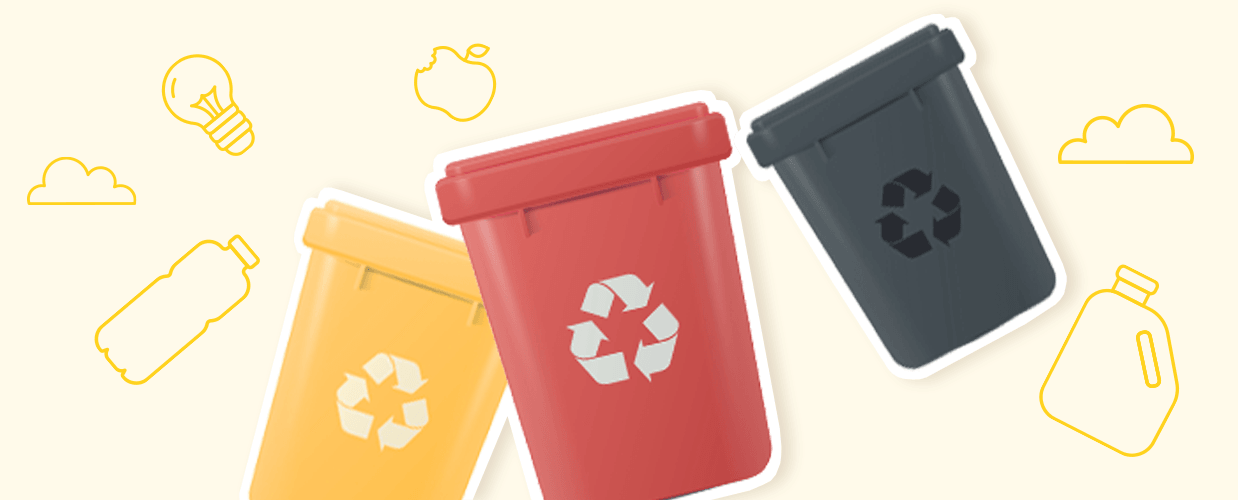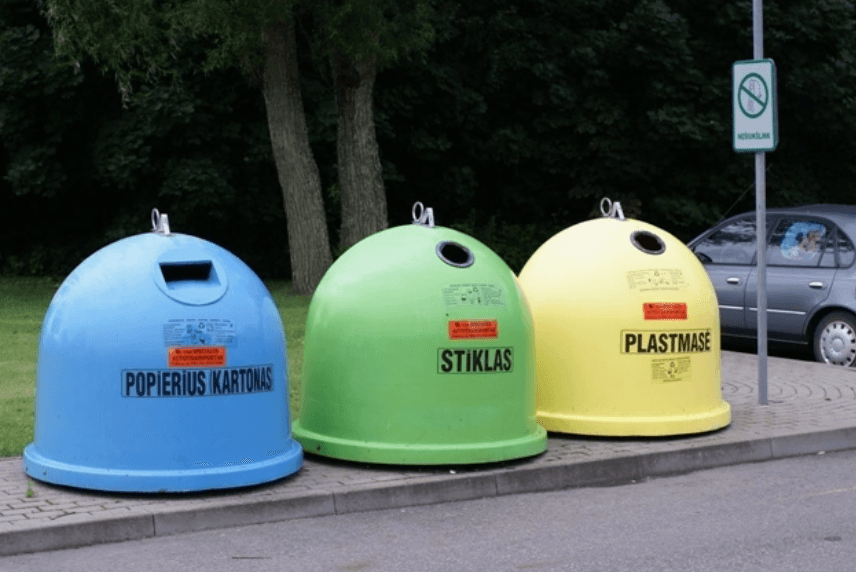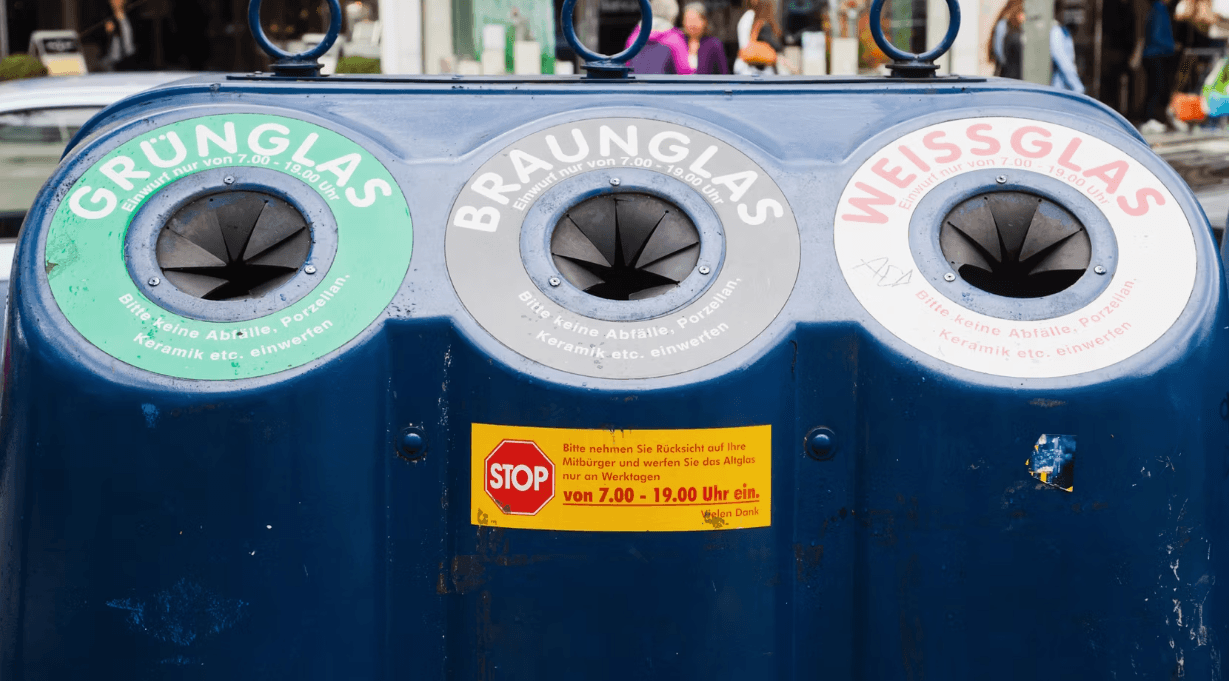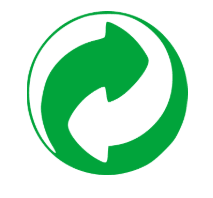Waste Sorting Rules in Germany
Thanks to a well-structured and highly efficient management system, thoughtful policies, and a culture of environmental responsibility, Germany has achieved one of the highest recycling rates in the world. If you plan to live or travel in the country, it is important to understand the rules of waste sorting in order to avoid fines.
Earlier, we wrote about how to get a residence permit in Germany.

How Waste Is Sorted and Recycled in Germany
Since 1972, the country has been transitioning from a disposal-based economy to a circular economy. Instead of incinerating large volumes of waste, Germany strives to reuse materials in order to conserve natural resources and promote careful treatment of the environment.
Since 2015, according to the Circular Economy Act, paper, glass, plastic, and organic waste must be collected separately. The responsibility for sorting waste in Germany lies with consumers. Specialized waste management companies, such as Der Grüne Punkt, BellandVision, or PreZero, empty household bins and deliver the material for recycling or disposal.
The disposal and recycling of packaging in Germany is based on the principle of extended producer responsibility. For each unit placed on the market, the manufacturer pays a licensing fee. The funds go toward financing waste disposal.
Consumers are not charged a municipal tax for packaging disposal; however, the manufacturer often offsets the mandatory fee in the product price. As a result, recycling is partly paid for by the customer.
Waste Recycling in Germany
After being collected from containers, waste is sorted at recycling plants by material type: tin, aluminum, plastic, cardboard, etc. If households separate waste properly into bins, the process becomes much faster.
Metals are the easiest to separate. At the end of the process, discarded material is recycled into aluminum bars or steel and given a new life in metal products.
Plastics are more complicated: there are too many different types, and not all can be reused. Still, about 35% of all plastic waste in Germany is recycled — not only consumer packaging from bins but also industrial waste.
| Material | Example of Recycling |
|---|---|
| PE (polyethylene) — ½ of all packaging | storage containers, film, buckets |
| PP (polypropylene) — ⅕ of all packaging | flower pots |
| PET (polyethylene terephthalate) | reused (bottles), recycled into film/polyester |
| Packaging film | pipes, buckets |
| Others | incinerated |
Plastic is shredded into pellets and used to manufacture new products for construction, agriculture, and gardening. The quality of such items is usually lower than that of the original products.
Glass in Germany is recycled into new items such as bottles, glasses, windows, or fiberglass. Sorting glass plays a particularly important role in the country’s circular economy. Reusing this material helps reduce environmental pollution, conserve raw materials like sand, and decrease the use of plastic packaging.
Organic waste is composted or sent for biogas production. It is important that households do not dispose of other materials along with food scraps — impurities contaminate the final product.
Waste that cannot be recycled is incinerated.
Waste Sorting in Germany by Color
In large cities, the yards of every household or apartment building usually have four garbage bins, each a different color. If there are no containers nearby, residents must bring their waste to a local collection and recycling point.
Colored bins are designed for collecting, disposing of, and recycling packaging: films, bottles, boxes. Batteries, electronics, and old items are discarded separately.
Waste Collection Calendar in Germany
For the convenience of citizens, each municipality provides an Abfallkalender (waste collection calendar). It lists the dates for the removal of various types of waste, including bulky trash. It also contains the addresses of collection points for items that cannot be sorted or for hazardous materials.
The Abfallkalender is available online on the official website of the municipal waste management company. A PDF version can also be found by searching for Abfallkalender + district name. A printed copy is distributed free of charge at the local town hall or library.
On collection day, residents of private houses roll out the container of the designated color for the waste collectors. If the bins are already located close to the road, no action is required.
Blue Bin (blaue Tonne)
Used for paper and cardboard, as well as kraft paper bags, newspapers, magazines, and cigarette packs (without wrappers). Plastic, metal, and glass must never be placed in the blaue Tonne. Cardboard boxes should be torn or flattened before disposal.
Heavily soiled paper waste should be thrown into the general (black) bin. If you are unsure of the packaging material, dispose of it as plastic.
Yellow or Orange Bin (Wertstofftonne)
Used for plastic and metal containers — any packaging that is not made of glass or paper. Examples include aluminum foil, plastic bags, Tetra Paks, yogurt cups, juice and milk cartons.
The yellow bin mainly collects packaging. In some municipalities, you can also throw in non-packaging items made of plastic and metal, such as broken toys, aluminum pots, and more. Sometimes a separate container is provided for “non-packaging waste made from recyclable materials.”
Green Bin (Glasiglu)
This is a case where the name is conditional. Depending on municipal regulations, either three separate bins or one bin with three compartments may be installed: for green, brown, and white glass. Containers of unusual colors, such as blue or red, should be placed in the green bin.


What Glass Containers Look Like
The bin is intended for bottles. Baking dishes, lightbulbs, window glass, drinking glasses, vases, and broken mirrors must be disposed of in the gray/black bin.
It is not mandatory to wash bottles. It is recommended to rinse them lightly to avoid contaminating recyclable materials. Lids from glass containers can be thrown into the yellow bin, but this is also not required — at the plant, machines will separate them.
Note: Grüner Punkt
Products marked with the Grüner Punkt (Green Dot) logo can be plastic, glass, or paper. The logo looks like two interlocking arrows, one white and one green.

The Grüner Punkt means that the manufacturer has paid for the recycling of this packaging. Depending on the material, packaging with the Green Dot should be placed either in the yellow bin or in the glass recycling bin.
Brown Bin (Biomüll)
For biodegradable organic waste: food scraps, vegetables, fruits, meat, fish, bread, eggshells, tea bags, coffee grounds, and bones. It is strictly forbidden to dispose of foreign objects made of plastic, metal, or glass in this bin. The material from the brown bin is used for the production of biogas and compost. Impurities spoil the final product.
Black/Gray Bin
This is the final destination for items that cannot be sold, donated, or recycled, as well as waste unsuitable for other bins. Grease and vegetable oil should also be placed into the black bin to avoid clogging pipes.
Starting in 2025, textile products are no longer allowed in this bin. For old clothes, curtains, and bed linens, there is now a separate container — or they must be taken to a recycling center.
Bottle Return Machines (Pfandautomat) for Deposit Containers (Pfand)
Pfand is a deposit on single-use or reusable packaging. When buying drinks in aluminum cans, glass, or plastic bottles, a deposit of €0.08 to €0.25 is charged, and in rare cases up to €0.60. The deposit is refunded when the bottle is returned to a store or a special deposit machine.
It does not matter who bought the container and who returns it — the deposit is refunded to the person who brings back the empty container. If you cannot return it yourself, you can leave deposit bottles near trash bins. Anyone can collect them and return them to a store or machine to receive the Pfand. Some Germans even turn collecting other people’s deposit bottles into an extra income.
Deposit Amounts per Bottle
| Type of Packaging | Pfand (cents) |
|---|---|
| Single-use | |
| Beer bottles (glass and plastic) | 25 |
| Aluminum cans | 25 |
| Milk bottles | 25 |
| Reusable | |
| Beer bottle (glass + crown cap) | 8 |
| Beer bottle (glass + swing top) | 15–60 |
| Bottle (glass) | 8–25 |
| Water bottle (glass or plastic) | 15 |
| Bottle (glass or hard plastic) for juice or carbonated drinks (screw cap) | 15 |
| Others | |
| Yogurt jars | 15 |
| Beer keg or barrel | 50 |
| (Source: payback.de) |
Crates for bottles also require a Pfand— usually €1.50. You can return a crate to the store or through a bottle return machine; there is a slot of the appropriate size at the bottom. However, most wine bottles and bottles purchased in other countries are not accepted under the Pfand system and are instead sent for recycling.
Containers that are part of the system can also be placed in the appropriate recycling bin, but the deposit will not be refunded.
How to Tell if Packaging Has a Deposit or Not
Deposit containers can be recognized by Pfand symbols. If a can or bottle has similar logos (printed in different colors), be prepared to return the container if possible.

You can also identify Pfand by key words:
- With deposit: Mehrweg, Pfand-Glas, Mehrwegflasche;
- Without deposit: Pfandfrei, Ohne Pfand.
These words may be printed on the label or engraved on the bottle.
Where to Return Pfand Containers
The easiest way is to return the packaging to the place where you purchased the product. If the store does not sell products in bottles of a specific brand, the staff may refuse to accept the empty container. Exception: supermarkets with an area of more than 200 sq. m. are required to accept any packaging.
- Pfandautomat. In many chain stores, return machines are located at the entrance or in the back. They only accept containers commonly sold in the store. If the machine does not accept the packaging, you will need to return it elsewhere. The machine prints a receipt — to get your refund, you must present it at the checkout.
- Liquor stores. Suitable for returning large quantities of alcohol bottles.
- Späti. Not the best option, but small shopkeepers will accept containers for products purchased there.
- Local bottle collection points. These accept any packaging with the Pfand symbol, but free of charge. The staff return the containers themselves, and the funds go to charity.
Make it a habit to keep receipts for products marked with the Pfand logo. This will make it easier to figure out where to recycle the empty container.
New Waste Disposal Rules in Germany in 2025
In 2025, the government introduced two new laws: one concerning textiles, the other organic waste.
Textile Products
Starting from January 1, 2025, old clothes, towels, bed linens, and other textiles must be disposed of in used clothing containers or taken to special collection points. Textiles can no longer be thrown into the residual waste bin, as it was previously allowed. The only exception is heavily soiled items.
If a citizen continues to dispose of old clothing and textiles in the residual waste bin, the waste collector may refuse to empty it.
New Rules for Sorting Organic Waste in Germany
In May 2025, a pan-European regulation came into force aimed at reducing environmental problems caused by plastic and other materials thrown away with organic waste. According to the “Requirements for the Removal of Foreign Objects”, the amount of non-organic matter in organic waste containers must not exceed 1%.
Households that violate this new rule will face fines. Citizens are urged to carefully monitor what they throw into organic waste bins.
What Cannot Be Thrown Away
In Germany, colored bins for separate waste collection are mainly intended for packaging. But what should you do with items that are not paper, plastic, or glass containers?
The basic solution that never fails: recycling centers accept almost everything. This is where Germans dispose of items that cannot be sorted, repaired, sold, or donated. The addresses of these centers can be found online, on the municipality’s website, and in the waste collection calendar.
Electronics
You cannot simply throw smartphones, headphones, TVs, and other electronics in the trash. Broken electronics must be disposed of through:
- separate containers for small devices (look for the WEEE logo),
- recycling centers (some offer collection services from your home or apartment),
- electronics stores (for small devices).
Sometimes stores also accept large appliances — provided you purchase a new similar device.
Batteries and Hazardous Waste
Supermarkets, hardware, and household stores often have containers for used batteries. They cannot be thrown into general waste.
There are no separate bins for expired medicine, energy-saving bulbs, fluorescent lamps, pesticides, leftover glue, or paint. Options are limited: use a collection service or take them to a recycling center. In rare cases, bulbs and LEDs are accepted at local pharmacies or hardware stores along with batteries.
Regular Items
Bulky items, furniture, and appliances must be delivered to a recycling center. Alternatively, you can wait for the designated collection days and hand items over to waste collectors.
Well-preserved second-hand clothes, shoes, toys, books, and other everyday items are recommended to be:
- donated, for example, to the German Red Cross, a charity shop, a second-hand store, or simply left at your door with a “Free” sign;
- sold — flea markets and online platforms like eBay or Momox are suitable.
If an item is in poor condition or very dirty, it should be thrown into the black/gray bin.
Fines for Violating Waste Sorting Rules in Germany
The amount of the fine depends on the severity of the violation and the federal state. The initial penalty can range from a few dozen to several thousand euros. Repeated non-compliance results in higher fines.
On average, for minor first-time violations, the offender can expect a fine from €10 to €100–200. The maximum fine for serious environmental pollution with hazardous substances can exceed €10,000, and in particularly severe cases up to €50,000. Do not neglect waste sorting rules — throwing paints or batteries into the trash bin can cost up to €1,500 in fines.
More details about penalties in different federal states can be found at the provided link.
Money Transfers from Germany
For newcomers to Germany, the waste sorting system may seem confusing and overcomplicated. To avoid fines, study the rules in advance — and instead of wasting money, send it to your family and loved ones. The Korona app can help with this.
With the app, fast and secure transfers to 60+ countries worldwide are available. Users praise the speed of delivery and the convenience of the process.
Korona is available for download on the App Store and Google Play.
In our blog, we write a lot about life and work in European countries. You may also be interested in other materials in our catalog.